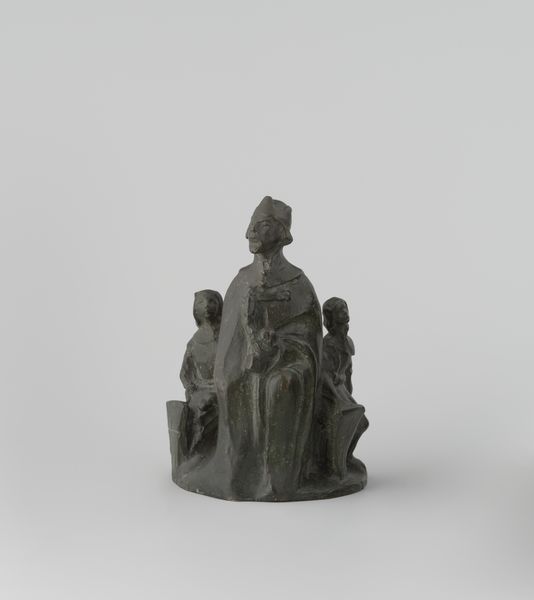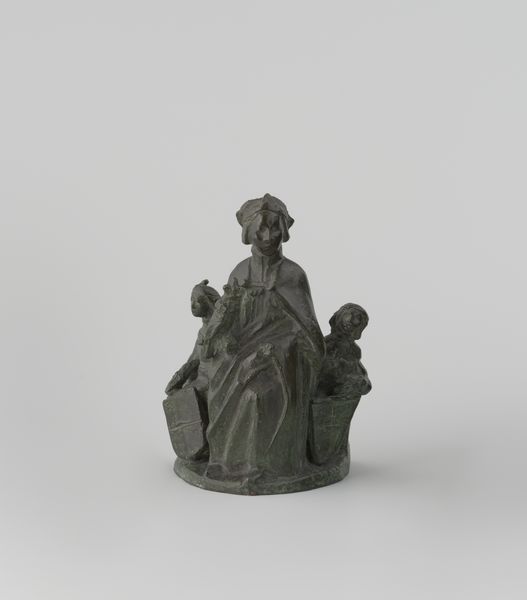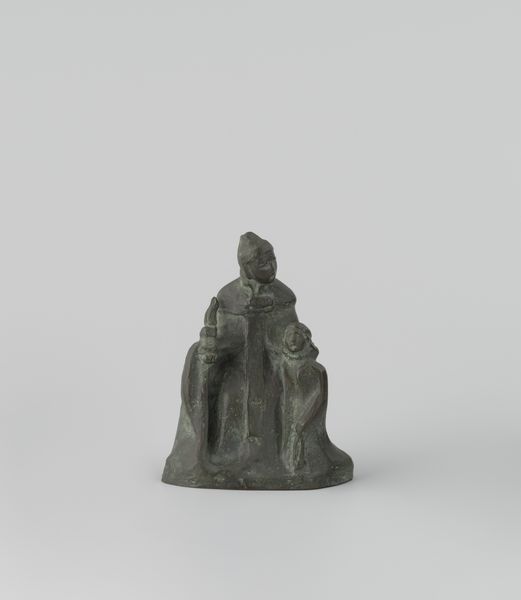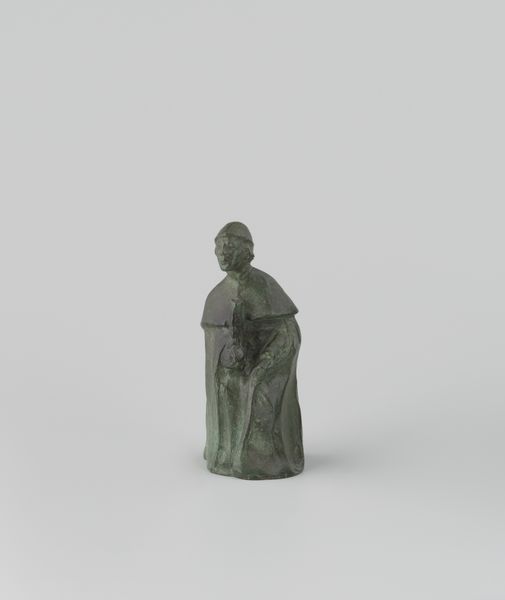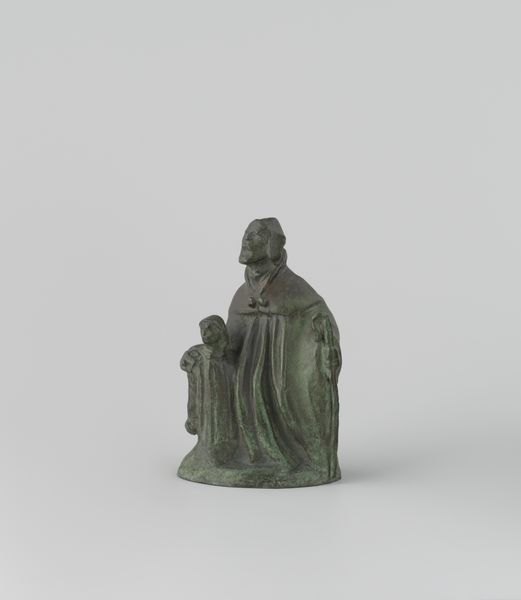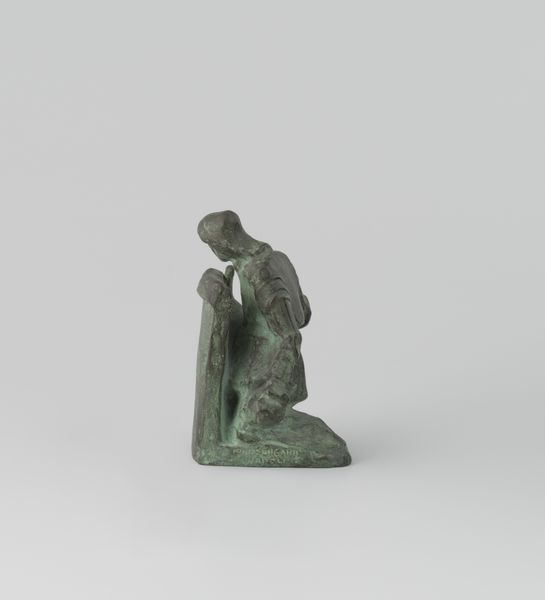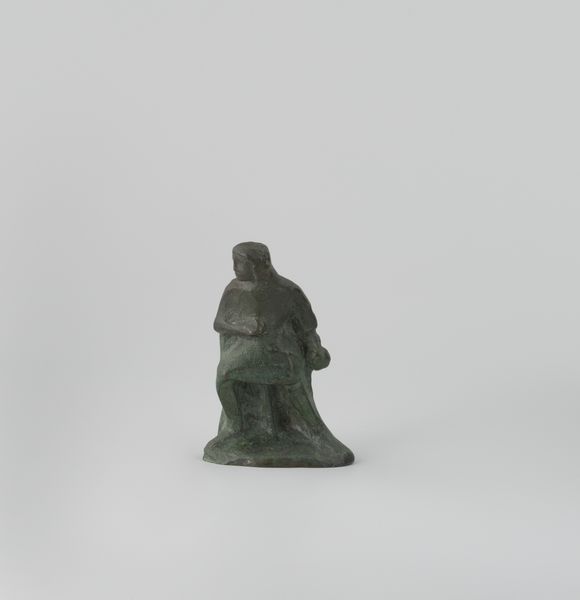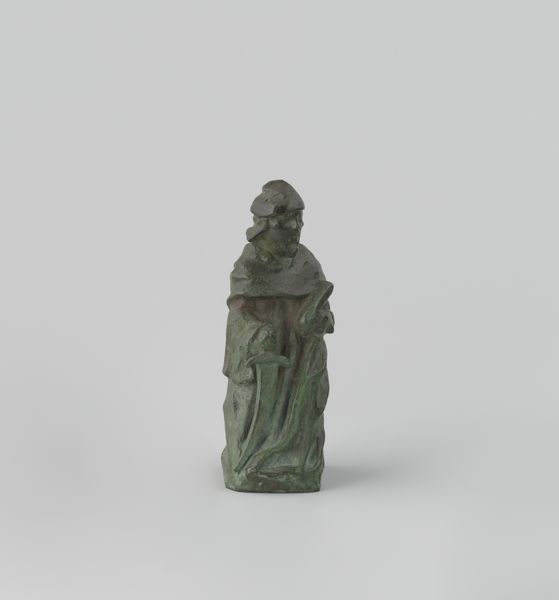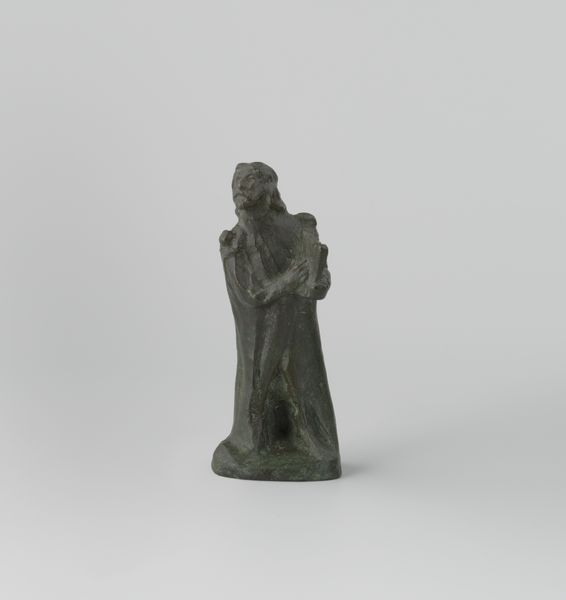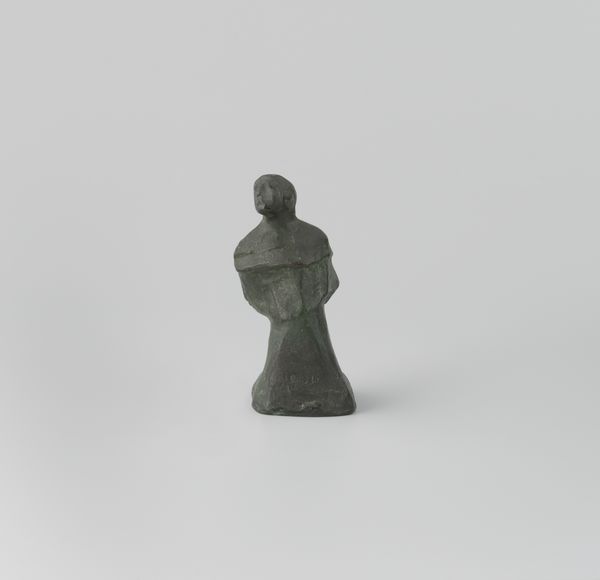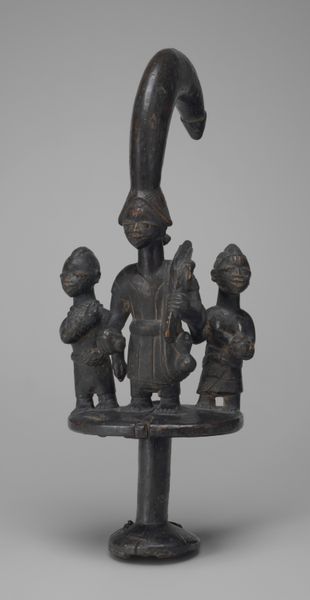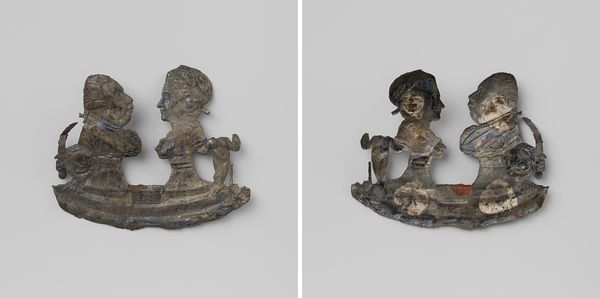
Zeventien schaakstukken in middeleeuwse stijl: een koning, een dame, twee lopers, twee paarden, twee torens, en negen pionnen 1923 - 1925
0:00
0:00
bronze, sculpture
#
medieval
#
sculpture
#
bronze
#
figuration
#
sculpture
Copyright: Rijks Museum: Open Domain
Editor: We're looking at "Zeventien schaakstukken in middeleeuwse stijl" - Seventeen Chess Pieces in Medieval Style - crafted in bronze by Saar de Swart between 1923 and 1925. I’m struck by how the figures are both stylized and imposing. How do you see these chess pieces through a contemporary lens? Curator: It's fascinating to consider these chess pieces as more than just game components. De Swart evokes the medieval era, which itself was steeped in rigid social structures and power dynamics. But by reimagining these figures as chess pieces, doesn't she implicitly comment on how individuals, even those in positions of power – like a King or Queen – are still just pieces moved about in a larger game, perhaps dictated by societal forces, class, or gender? Editor: That's an interesting point! So, are you saying the artist is questioning hierarchical structures through the chess game metaphor? Curator: Precisely. Think about it: the game of chess mirrors societal conflicts and strategies for dominance. De Swart, living in a time of significant social change, might be inviting us to consider the limitations and constraints placed on individuals within such systems, even those at the apex. Do you notice any visual cues suggesting that idea? Editor: The pieces all look pretty similar, even though some are clearly more important. Maybe that represents a kind of levelling, that we're all constrained? Curator: Exactly! And consider the date they were made: the interwar period. The world was reeling from the aftermath of a brutal conflict that destabilized traditional hierarchies. An artist looking back to medieval forms, and then casting those forms as chess pieces is, perhaps, making a comment on power, conflict, and the individual. Editor: It reframes the game – and societal roles – in a powerful way. I won't look at a chess board the same way again. Curator: Indeed. The personal is always political, even when disguised as a game.
Comments
No comments
Be the first to comment and join the conversation on the ultimate creative platform.
